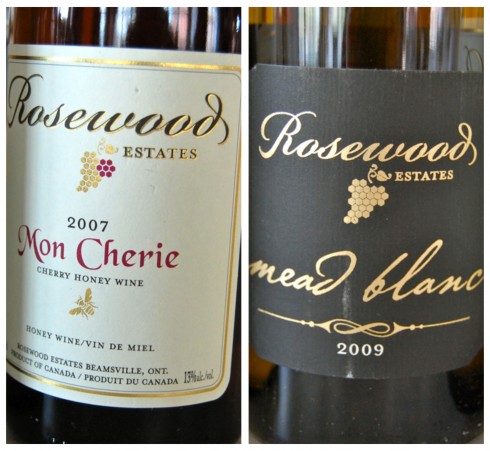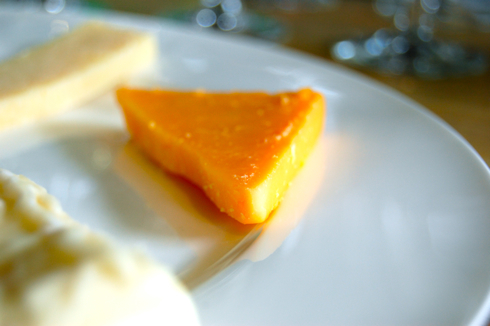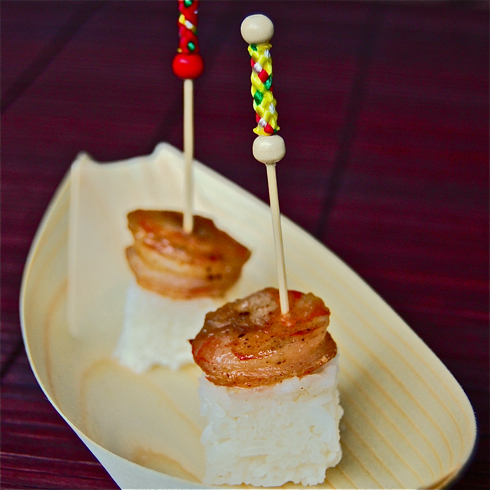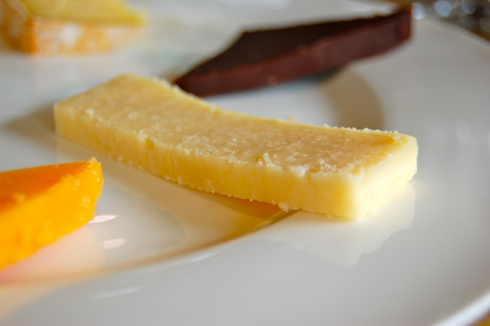 When I hear the word “mead” I immediately have thoughts of the “olden days” and warriors downing huge mugs of the stuff before they go off to battle. I did a little research to see if in fact, I was correct and found a fascinating history of mead on the Medovina website. Below is a modified and much-shortened version:
When I hear the word “mead” I immediately have thoughts of the “olden days” and warriors downing huge mugs of the stuff before they go off to battle. I did a little research to see if in fact, I was correct and found a fascinating history of mead on the Medovina website. Below is a modified and much-shortened version:
Mead can be traced back as far as the African bush more than 20,000 years ago. Their weather pattern would eventually cause hollows to rot out the crown of the Baobab and Miombo trees, where elephants had broken branches. During the dry season, feral bees would nest in these hollows, and during the wet season these hollows would fill with water. Water, honey, osmotolerant yeast, worked with time and finally a mead is born. Early African bushmen and tribes gathered honey and mead and as each successive wave of people left Africa they took with them knowledge of mead and mead making.
Eventually mead making came to Europe, India and China, but gradually, as people became urbanized, mead making died out. This happened 1700 years ago in India, 1500 years ago in China and about 500 years ago in Europe. Honey has been prized throughout history, evident in that it was often available only to royalty. Around 1300 A.D. Marco Polo returned from the Spice Islands with sugar cane. Whilst the majority of people preferred sugar cane as an inexpensive source of sugar, the monasteries of Europe kept alive the tradition of mead making. Monasteries needed candles, which called for beeswax, necessitating bee colonies and surplus honey was used to make mead. There are still monasteries in Great Britain who continue their 400+ year tradition of mead making.
So what exactly is mead, you ask? According to the Rosewood Estates website, mead is made from the fermentation of honey and water. Honey is flower nectar collected by domesticated honeybees (apis mellifera). Honey is a remarkable product which contains a complex mixture of sugars, enzymes, proteins, organic compounds and trace minerals. These compounds give honey its distinctive flavor and aromas. These carry over into mead production and lend a distinctive flavor to the finished mead.
As part of my sponsorship package for IFBC, my generous sponsor, Rosewood Estates supplied me with a couple of meads to try out. I first tasted them as part of a wine and cheese pairing I attended and had mixed reactions to the Mead Blanc, which was paired with a medium-aged cheddar.
I found the 2009 Mead Blanc – honey wine blended with Gewürztraminer and aged in a stainless steel tank – a little cloying – with strong notes of rose petals, spices and mandarin oranges, it was unfortunately a little too reminiscent of perfume for my liking. Even when I took a bite of the cheddar and a sip of the wine and made a “slurry” in my mouth, I found the rose aroma too much. I think itʼs definitely an acquired taste!
I much preferred the 2007 Mon Cherie – a blend of sour Niagara cherry juice and Rosewoodʼs local honey which creates a medium-dry mead – it was much more suited to my palate. Chilled, this is recommended for consumption with chocolate desserts or a fruity meat dish such as pork tenderloin served with fruit chutney. That particular tasting was paired with a creamy 7 year-old cheddar.
 When we received more mead from Rosewood, Neil and I put our thinking caps on to come up with a food pairing. Over to my in-house sommelier…
When we received more mead from Rosewood, Neil and I put our thinking caps on to come up with a food pairing. Over to my in-house sommelier…
Mead was an interesting sommelier challenge for me: while I know a fair bit about it *in theory* – practically speaking I haven’t really got too much experience with the stuff.
Unfortunately for most, mead has a bit of a one-dimensional (and oftentimes not entirely positive) stigma. Which is a shame, considering its variety and provenance. The process of creating mead can be more naturally pure than with wine, and range in style almost as diverse. At Rosewood, they make traditional meads and pyments, meads fermented with grape juice. Which really comes as no surprise, as a winery. So time to buzz into the tastings…
My first tasting was of their 2009 Mead Blanc. The nose swarms around your head, with heaps of floral and spice notes. Immediately I was reminded of Gewürztraminer; rose petals predominate. If you like Gewürz, you’ll like this: NOT a shy wine. On the palate, it’s sweet, but with a crisp backbone. There’s a noticeable flintiness as well, which reminded me of Italian Pinot Grigio, especially in a year that has been a bit shy on sun and heavy on rain. (That slight sharpness from grapes not fully ripened.) It’s an intriguing mélange of sweet and dry. I was challenged with a pairing, so might tend towards a slightly salty (but not overly strong) hard cheese. I hadn’t read Rosewood’s notes before trying this, so was pleased to find that in fact it is a pyment, fermented with Gewürztraminer. I’m not sure the ratio.
For the Mead Royale, Neil did read up ahead of time, to better pair a dish. We ended up choosing an old favourite – one that I have posted about before and one which has made an appearance on our table recently, both for our 15 minutes of fame and for a Project Food Blog dinner.
We chose the shrimp because the mead was higher on the sugar scale (rated a 7), this immediately had Neil suggesting something spicy. He says: Fruit more than floral on the nose, with Clementine and lush stone fruit. (You know, the ones you forget to pick, are so ripe they’ve fallen off the tree, you find a day later on the ground and when you pick it up and bite in, peach juice just dribbles down your front…) This one had a more obvious honey on the palate, whilst the acid keeps it from become treacly. For my personal tastes I would not drink on its own, though as a chilled aperitif it will definitely work for some. I found it matched reasonably well with the spicy prawns (which had an extra dose of heat in this latest batch).
So the verdict on meads? While definitely not for everyone, you should not shy away from trying them. Not all wines are for everyone either – but I would encourage you to try every varietal (and region) once. It’s a fun game to see how different meads can be, and what the winemaker/meader (?) can infuse (e.g. through botanicals) to add their own distinctive touch.
Here’s our recipe – it’s an old recipe from the New York Times but each time we make it, we change it up a little. Here’s my take on it:
Yield: 6 servings
Ingredients
1 cup sugar (plain white sugar is best – it caramelizes well)
2 1/2 teaspoons sea salt
2 teaspoons Penzey’s Black and Red Spice blend
2 large cloves garlic, peeled and minced
1 1 1/2-inch slice fresh ginger, peeled and minced
1/2 teaspoon ground allspice
1/2 teaspoon ground turmeric
2 tablespoons all-purpose flour
Zest of one lime
Vegetable oil, for greasing baking sheet
24 jumbo shrimp, peeled with tail left on, deveined
Juice of 1 lime
Preparation
1.Preheat the oven to 500 degrees. In a mixing bowl, combine the sugar, salt, Black and Red, garlic, ginger, allspice, turmeric, flour and lime zest Grease a large baking sheet.
2.Dredge the shrimp, a few at a time, in the sugar mixture and place on the baking sheet. Bake until the sugar is caramelized, especially on the bottom, about 10 minutes.
3.Remove the shrimp from the oven, turn over with a spatula and squeeze lime juice over them. Place on a platter and serve immediately.
 For Project Food Blog, I served these on a cube of sticky rice, for presentation reasons only. These shrimp are delicious all by themselves or with some stir-fried vegetables. They are so easy that you can’t go wrong. Plus, you can have fun experimenting with different spices. The possibilities are endless. Enjoy with some mead, if you can get your hands on some….
For Project Food Blog, I served these on a cube of sticky rice, for presentation reasons only. These shrimp are delicious all by themselves or with some stir-fried vegetables. They are so easy that you can’t go wrong. Plus, you can have fun experimenting with different spices. The possibilities are endless. Enjoy with some mead, if you can get your hands on some….
Disclosure: The gorgeous bamboo disposable serving “boat” depicted in the photo of the shrimp dish was provided at no cost by RestaurantWare.com. If you would like to order your own bamboo tableware with 10% off, use the code eatlivetravelwrite at checkout.



For some additional adventures you should seek out some Scandanavian style meads. I have had one with vanilla and spices added and another that tasted of oranges but not from any flavoring. I made a blackberry nutmeg mead back in 2007 that came out great. With honey prices where they are I haven’t done it again but I hope to next year.
I was so happy to see an article on mead show up on Foodbuzz! We don’t have enough beverage diversity and thoughtful experiments with pairing here. You guys rock!
Jason
I think Harry Potter when I think of mead. Great shrimp!
I know what I will be doing when I come visit! Eat and drink LOTS with both of you 😉
I have a bottle of homemade Mead in my liquor cabinet.
I knew a guy who made some great ‘dry’ Mead with green tea.
I personally use it to marinate venison in. It’s quite good when used in cooking.
Hmmm…that’s a neat idea, Wolf. I might have to try that in the new year – have a great big jar or gorgeous honey from Rosewood, so might be just the ticket! 🙂
I had no idea what a mead was until I read this post! Thanks. It was very informative.
yep, mead makes me think of old timey olden days. we brew beer at home, and three years ago we made a mead. I think we may open a bottle during the holidays… 😀
Those shrimp look super delish… Lovely presentation!
Thanks! The rice cuts some of the spice!
I have not tasted mead before. I think that when I do, I would like to do so whilst wearing some ye olde clothing. I don’t own any ye olde clothing, which is perhaps why I have not yet tasted mead.
As much as I like to tease, I will admit that reading Neil’s tasting notes are enjoyable – you can tell a considerable amount of thought has gone into it. A considerable amount of adjectives too. I particularly like “treacly”.
Yes he’s very creative with his descriptions 🙂